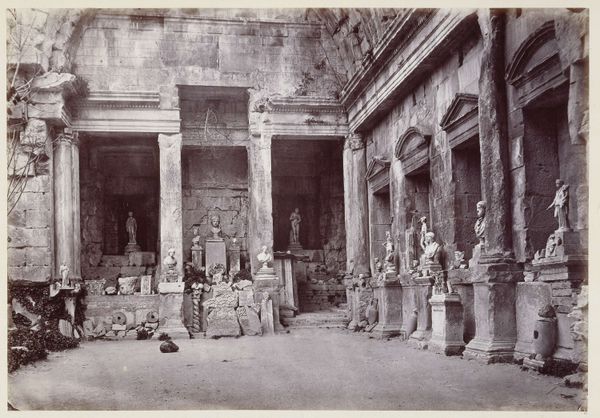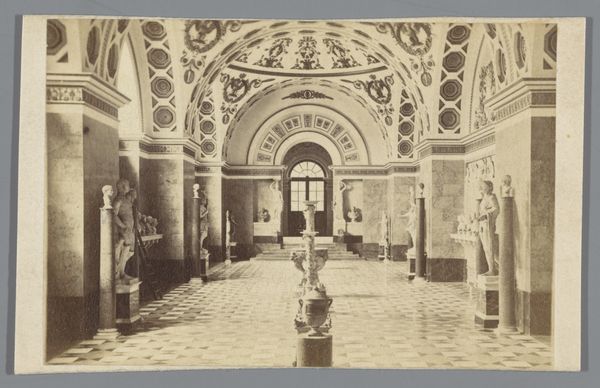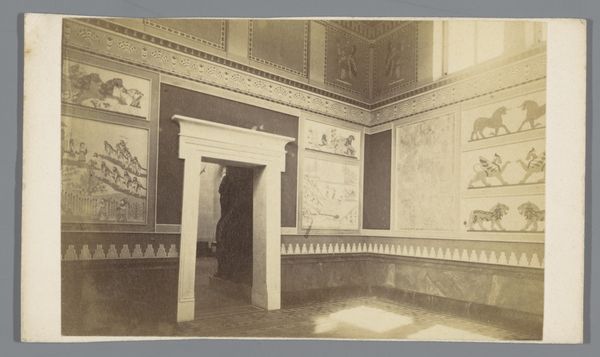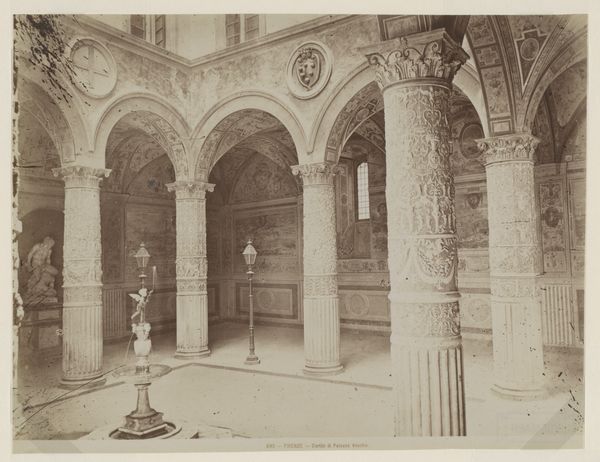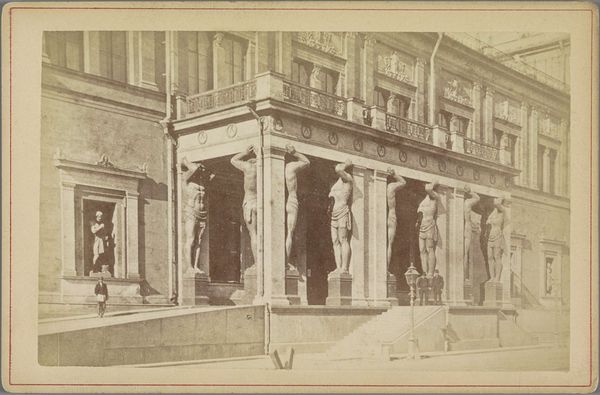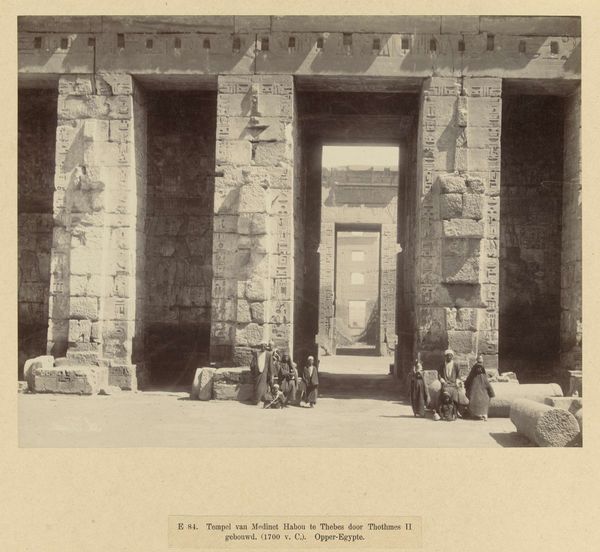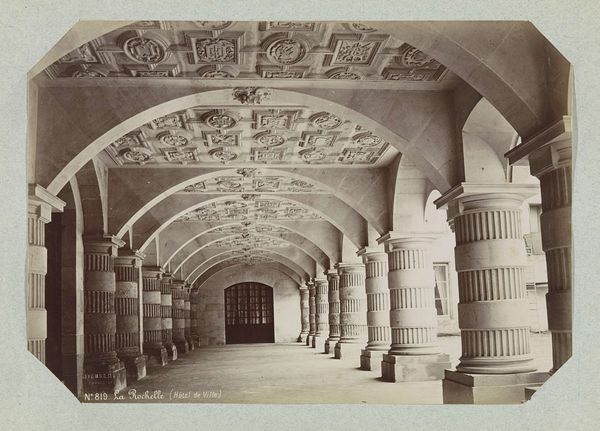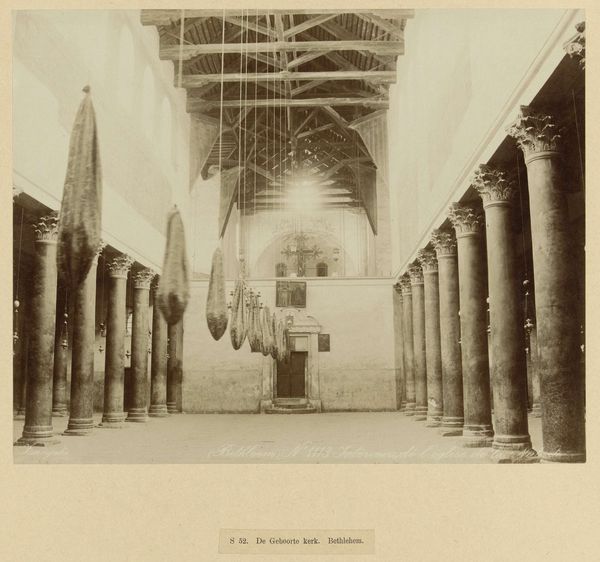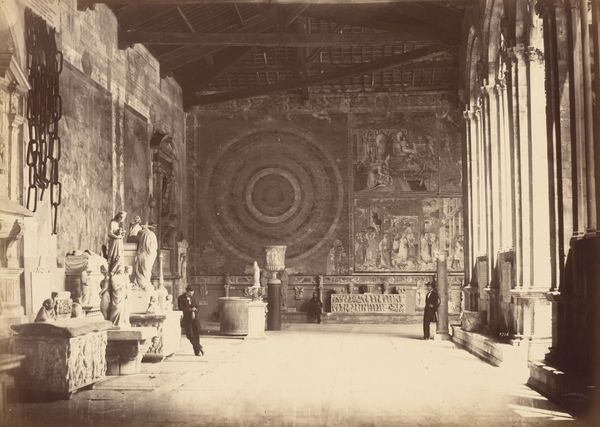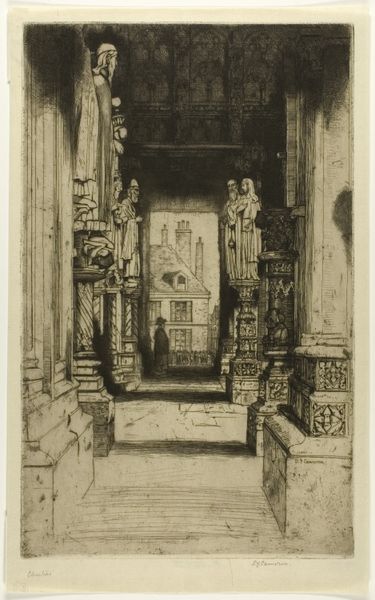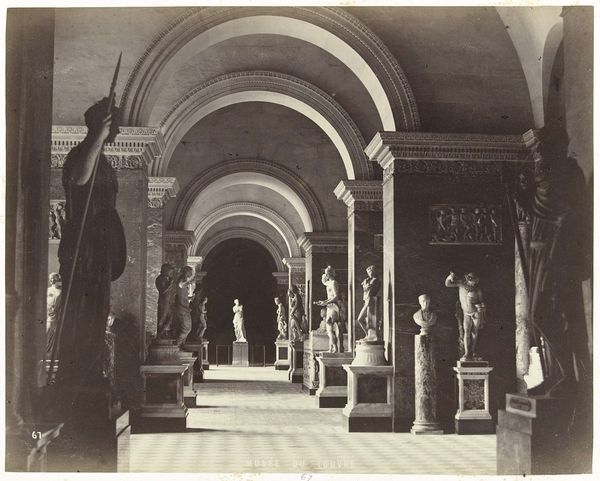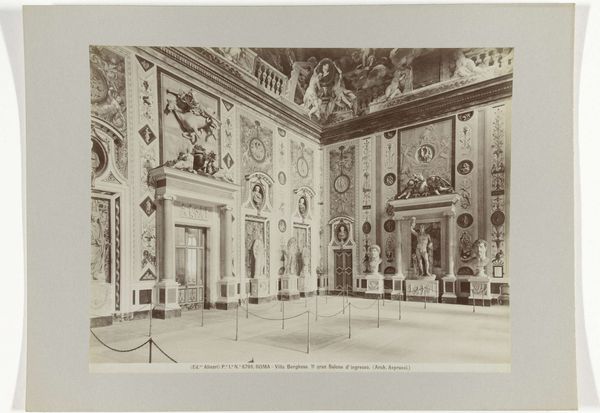
Dimensions: height 251 mm, width 286 mm, height 306 mm, width 374 mm
Copyright: Rijks Museum: Open Domain
Curator: It is hard to ignore the almost melancholic silence permeating this photo of the Walhalla interior. A stillness so absolute. Editor: And imposing, too! It's the architecture, the scale, the regimented repetition of busts and columns... oppressive in a way that mirrors its historical context. What is this building meant to embody, exactly? Curator: Well, let's dig in. What you're looking at is a photographic print, created in 1891 by H. Hoffmann, showcasing the interior of the Walhalla near Donaustauf, Germany. This grand hall serves as a hall of fame, honoring distinguished figures in German history. Think of it as a Neoclassical pantheon. Editor: A carefully curated space to manufacture a sense of national identity. Look at the symmetry, the deliberate ordering, even the placement of the skylight creates this almost ethereal... idealization of history. Is it selective about whose history is honored, though? Curator: Absolutely. The selection criteria and the visual language employed reflect 19th-century notions of Germanness, deeply intertwined with nationalism and specific cultural values. The busts, the classical architecture... these are all signifiers of a constructed identity. We’re meant to see this space, and by extension, the nation, as timeless and authoritative. Editor: A visual program, one could say. The hall’s design aesthetic is a conscious effort to associate the concept of the German nation with the grandeur and presumed moral authority of the classical world. Curator: Indeed. Notice the sheer number of busts, evoking this pantheon effect that directly references the Western canon; all presented as pillars of a nation. Their silent presence reinforces the concept of collective memory. The effect almost calcifies certain heroic figures, placing them outside history itself, while quietly excluding others. Editor: The visual effect then is a monument not just to individual greatness but also a testament to the power of selective memory and mythmaking within a nation's historical consciousness. It feels exclusionary. A very potent, calculated, piece. Curator: Agreed, the image acts almost like a psychological time capsule, reflecting the socio-political tensions inherent to the creation of a national identity, an ongoing negotiation that we must continue to analyze critically.
Comments
No comments
Be the first to comment and join the conversation on the ultimate creative platform.
